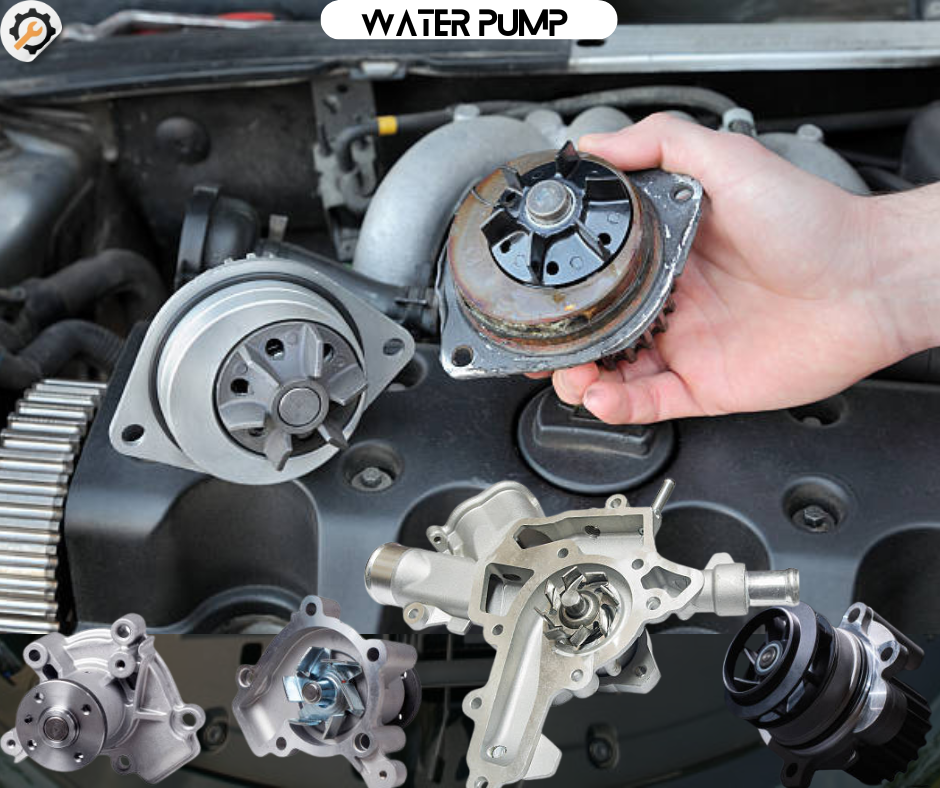When to Replace Your Car’s Water Pump: Don’t Wait for Overheating Disaster

Your car’s water pump is like the heart of your engine’s cooling system. It constantly pumps coolant through the engine, keeping everything at the perfect temperature and preventing catastrophic overheating. Without a functioning water pump, your engine would overheat in minutes, leading to a breakdown or, even worse, severe engine damage that could cost you thousands in repairs.
But here’s the catch—most drivers don’t think about the water pump until it fails. And by then, it’s often too late. Want to avoid a major headache? Let’s dive into why your water pump is so important, how to know when it’s on its last legs, and why you should replace it before it leaves you stranded.
The Role of Your Water Pump: Keeping Your Engine Cool Under Pressure
The water pump works by circulating coolant (a mix of water and antifreeze) from the radiator to the engine block and back again. This flow regulates the engine’s temperature, ensuring that it doesn’t overheat while running. When your car’s engine is operating at high RPMs or under a heavy load, it produces a tremendous amount of heat. Without the water pump, that heat would build up rapidly, causing engine components to warp, crack, or even seize up completely.
In short, the water pump is the unsung champion of your cooling system—until it fails. And once that happens, you’re in for an expensive repair bill if you don’t catch it in time.
Warning Signs Your Water Pump is About to Fail
Water pumps rarely just stop working out of the blue. They usually give some warning signs that they’re starting to fail. Here’s what to watch for:
-
Coolant Leaks: One of the most obvious signs of a failing water pump is a coolant leak. Look under your car for puddles of green, orange, or pink fluid. If your water pump’s seals are worn out, it may start leaking coolant, leading to low coolant levels and, eventually, overheating.
-
Overheating Engine: If your engine’s temperature gauge starts creeping into the red, don’t ignore it. A faulty water pump can’t circulate coolant effectively, which leads to rising engine temperatures. Constant overheating is a sure sign that something is wrong with your cooling system, and the water pump could be the culprit.
-
Squealing or Whining Noise: When the water pump bearings start to wear out, you may hear a high-pitched squealing or whining sound coming from the front of your engine. This noise means the pump’s internal bearings are failing, and it’s only a matter of time before the pump fails completely.
-
Steam from the Radiator: Seeing steam rising from your hood? That’s a clear sign your engine is overheating. If your water pump is shot, it won’t be able to circulate coolant, causing the engine to overheat and steam to escape from the radiator.
-
Rust and Corrosion on the Pump: Over time, the water pump can develop rust or small leaks that corrode the metal. If you notice any rust, pitting, or visible damage on the water pump, it’s time for a replacement.
Why You Should Replace the Water Pump Before It Fails
Replacing your water pump before it completely fails is crucial for a few reasons:
-
Avoid Engine Overheating: A failing water pump leads directly to engine overheating, which can warp or crack important engine components like the head gasket, pistons, and cylinder heads. This can turn a simple water pump replacement into an expensive engine repair—or even a full engine replacement.
-
Save Money on Repairs: Water pumps are generally inexpensive to replace compared to the damage that overheating can cause. By replacing your water pump at the first sign of trouble, you’ll save yourself from a much bigger and costlier repair down the road.
-
Prevent Being Stranded: The last thing you want is for your water pump to fail in the middle of a long drive. A broken water pump means an overheated engine, which can leave you stranded with steam pouring out from under your hood.
When Should You Replace Your Water Pump?
Most mechanics recommend replacing your water pump every 60,000 to 100,000 miles, depending on your vehicle and driving habits. However, if you notice any of the warning signs mentioned above, don’t wait—replace the pump immediately. It’s also a good idea to replace the water pump whenever you change the timing belt, as both components often wear out at the same time and are located in the same area of the engine.
Don’t Wait—Keep Your Engine Cool with a New Water Pump
Your water pump is a small but vital part of your car’s cooling system. Ignoring the signs of failure could lead to serious engine damage and hefty repair bills.
At Sparesworld, we’ve got you covered with high-quality replacement water pumps and expert advice on maintaining your vehicle’s cooling system. Don’t let a worn-out water pump ruin your ride—shop with us today and keep your engine running cool and smooth for years to come.
Stay ahead of engine failure. Keep an eye on that water pump and replace it before it’s too late!

 Loading..
Loading..